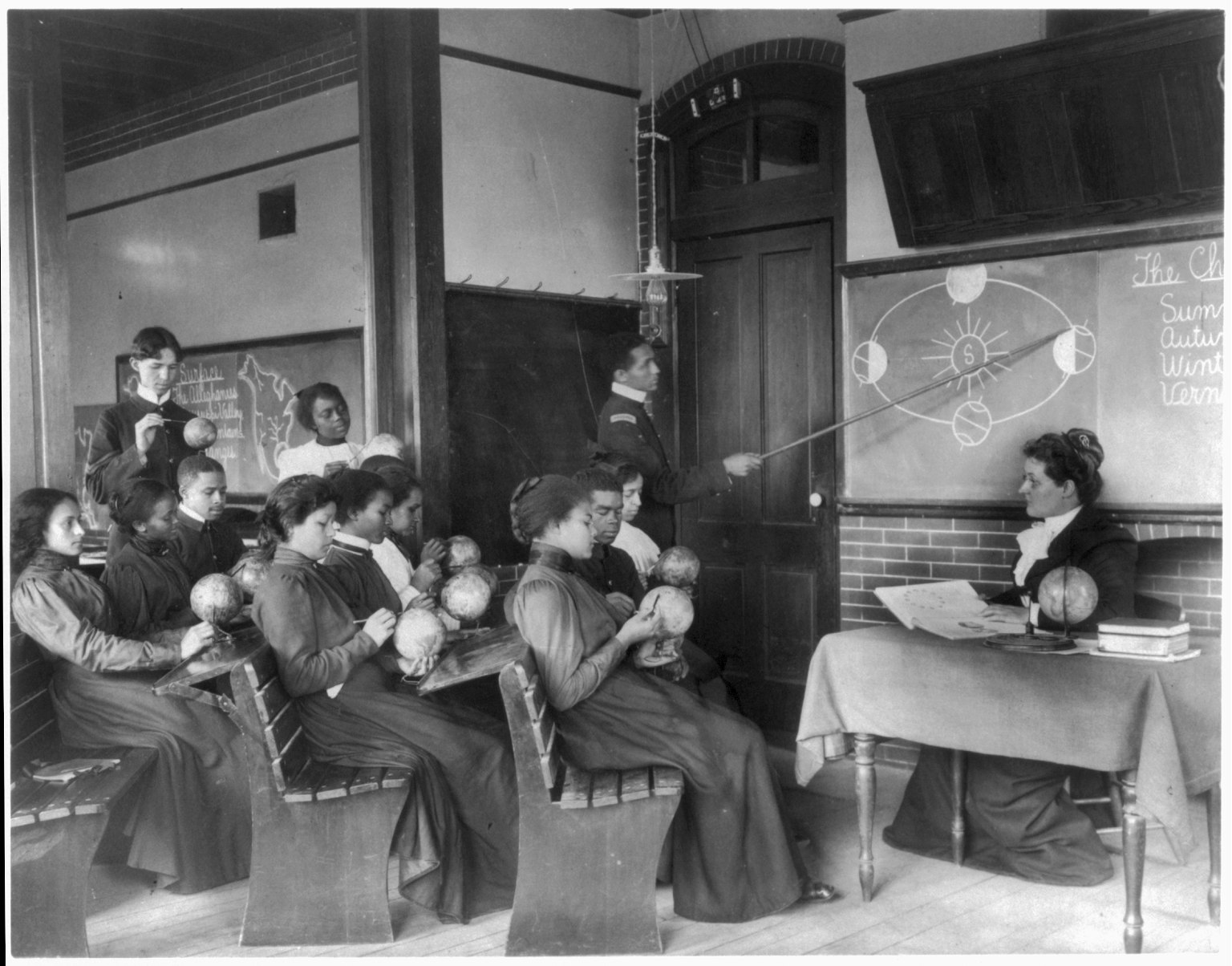
Consciences of ecology
Esprit October 2025
André Gorz’s anti-productivist socialism; Bernard Charbonneau’s ecological personalism; environmentalism’s anarchist roots; ero-politics.
Interviewed in feminist history journal L’Homme, influential historian of science and gender Londa Schiebinger talks about biological determinism in modern science and education, the impact of diversity on the contemporary natural and human sciences, and agnotology – the study of culturally-induced ignorance.
Londa Schiebinger, professor of history of science at Stanford University, is one of the most renowned historians working on the crossover between gender history and the history of science today. Particularly her publications on women and gender perspectives in the early natural sciences have influenced generations of students. Alongside gender history, Schiebinger is also interested in the overlap between medicine, botany and colonialism. Her most recent publication is Secret Cures of Slaves: Peoples, Plants and Medicine in the Eighteenth Century Atlantic World (2017). In the following, Schiebinger talks to historians of science Claudia Opitz-Belakhal and Sophie Ruppel, editors of the recent issue of the journal of feminist history L’Homme, entitled ‘Producing science’ (‘Wissen schaffen’).
Claudia Opitz-Belakhal and Sophie Ruppel: In your work, especially on the early modern period, you have demonstrated that women have always been part of processes of the production of knowledge, and that they have contributed to scientific developments. Why, then, is it especially in the eighteenth and nineteenth centuries that people were so eager to naturalise gender stereotypes in medical treatises and anatomical studies, and thereby to exclude women from scientific work, on the basis that they were – by nature – not capable of theoretical and scientific thinking?
Londa Schiebinger: Biological determinism, the notion that by nature women are incapable of doing great science, arose in the eighteenth century as an integral part of the new democratic orders in the US and France, and the rise of modern science. It is so difficult even today for us to shake off naturalised notions of gender because they were built deeply into the structure of modern society and science.
The eighteenth-century ‘woman question’ – the question of women’s proper role in modern society – was answered with science. With the waning of European corporate society, political theorists from John Locke to Jean-Jacques Rousseau came to identify the (mythic) individual endowed with inalienable natural rights as the foundation of the state. This new political order was grounded in Nature and natural law. Science, as the knower of nature, came to arbitrate social debates.
Within this revolutionary liberal framework, an appeal to natural rights could be countered only by proof of natural inequalities. In other words, if social inequalities – the slavery of Africans in the US and the continued disenfranchisement of women – were to be justified, scientific evidence had to show that human nature is not uniform but differs according to race and sex. My book The Mind Has No Sex? Women in the Origins of Modern Science details the appearance of the first female skeletons in European anatomy. And it was these skeletons (or scientific representations of female ‘nature’) that came to define the position of women (especially white middle-class women) in European society at large and in science in particular. In the eighteenth century, great debate arose over the particular strengths and weakness of the female skeleton, focusing on depictions of the skull as a measure of intelligence and the pelvis as a measure of womanliness. These purportedly objective renderings of female nature showed that woman was destined to have children and to nourish them. Thus, women’s exclusion from science was rendered ‘natural’ and just, something guaranteed by the claim of scientific objectivity.

A class in mathematical geography studying earth’s rotation around the sun, Hampton Institute, Hampton, Virginia (1899) Source: Flickr
Even today, (socio-)biological arguments determine the gender debate in many contexts and in public opinion, and people do not distinguish between sex as a biological marker and gender as a socially constructed set of behaviours and beliefs. Again and again, women are said to be more capable of one thing, men of the other – for example brain research. In your opinion, why are these ideas about a female/male nature so enduring?
Yes, I’ve heard that this is a problem in Germany. In the US, since Lawrence Summers was fired as the president of Harvard University for saying that women are intrinsically incapable of great science, we have not had such a problem. In fact, scholars – both liberal and conservative – now agree that women are as capable in maths as men. The turning point was a number of articles showing that girls outperform boys in maths in several countries around the world. If maths genius is biological, boys should universally outperform girls. An interesting study by Jonathan Kane and Janet Mertz analysed Maths Olympiad winners from East and West Germany before 1989. Interestingly, they found girls from former East Germany among medallists but zero girls from former West Germany. Since these German populations are genetically similar (one might assume), we need to analyse cultural influences to account for this stark difference. Of course, the West has long had Barbie dolls; in 1992, Barbie informed her young owners that ‘maths class is tough’.
So, we in the US have largely given up on the biological determinist argument. Now, the low numbers of women in maths, physics, and electrical engineering are explained by preference. Girls just aren’t interested. Of course, we need to analyse and understand how cultural norms shape individual preferences. Gender remains a primary social category of power and privilege in western cultures. But because these structures of power were developed in the eighteenth century, these can also be rebuilt to advance equality in the twenty-first century.
The title of our special issue – ‘Wissen schaffen’ – could best be translated as ‘Producing knowledge’, since we want to stress that ‘knowledge’ is not only produced within universities and scientific institutions. Our readers will be confronted with knowledge from inside the academic world as well as from its peripheries or from outsiders. Given the exclusion of women in processes of institutionalisation and professionalisation in the nineteenth century and beyond – where and how can one search for the ‘hidden contributions’ of women in the modern history of knowledge and science?
Women are now making visible contributions to human knowledge. While women were ‘invisible’ scientific assistants in the past, we are now professors, often developing new perspectives, asking new questions, and opening new areas to research. These new questions often emerge from our social experiences and from what has long been considered women’s work in society. There is evidence to show that diversity in research teams can lead to diversity in research methods. Mathias Nielsen and I recently published findings in Nature Human Behaviour1 that established an empirical link between increasing the numbers of women in academic medicine and enhancing excellence in research by incorporating gender and sex analysis.
We can also see that diversity in participation leads to diversity in research questions. Historical examples suggest that women’s headway into traditionally male-dominated disciplines has coincided with expanding research agendas. As I argued in Has Feminism Changed Science?, during the 1980s and 1990s, the proportion of women entering the US academic medicine sparked analysis of traditionally under-researched areas of women’s health, such as heart disease, breast cancer, urology and autoimmune diseases.2 Similarly, the rapid growth in women primatologists in the 1970s and 1980s sparked key scientific breakthroughs that debunked traditional sex-based stereotypes about non-human primate behaviour. And women, along with men drawn from diverse backgrounds, entering the humanities and social sciences over the past thirty years have initiated new research paradigms. History, for instance, has added wondrously new research fields from women’s history to gender history and the history of the household to the history of sexuality.
In your work, the (post-)colonial perspective on the history of knowledge and science is crucial. Where do you see the methodological challenges of such an approach – and how to overcome them?
Robert Proctor and I have developed a methodology – agnotology – important for all periods of history but of particular value for colonial history.3 In my Plants and Empire: Colonial Bioprospecting in the Atlantic World, I develop an instance of agnotology associated with abortifacients.4 Historians have rightly focused on the explosion of knowledge associated with the scientific revolution and global expansion, and the frantic transfer of trade goods and plants between Europe and its colonies. While much literature on colonial science has focused on how knowledge is made and moved between continents and heterodox traditions, in this book I explored an important instance of the non-transfer of important bodies of knowledge from the New World into Europe. This ‘agnotology’, or the study of culturally-induced ignorances, serves as a counterweight to more traditional concerns for epistemology. Agnotology refocuses questions about ‘how we know’ to include questions about what we do not know, and why not. Ignorance is often not merely the absence of knowledge but an outcome of cultural and political struggle. Nature, after all, is infinitely rich and variable. What we know or do not know at any one time or place is shaped by particular histories, local and global priorities, funding patterns, institutional and disciplinary hierarchies, personal and professional myopia and much else as well. I am interested in understanding how bodies of knowledge were constructed, but more interested in analysing culturally produced ignorances of nature’s body. And I applied agnotology using Maria Sibylla Merian’s beautiful plant, the flos pavonis, to present not a history of a great man or a great woman, but of a great plant in order to understand how trade winds of prevailing opinion impeded knowledge of New World abortifacients from reaching Europe.
The problem with the type of Atlantic World history I do is sources. Europeans have been the focus of colonial science and medicine because they wrote extensively about it (and in the languages many of us readily read). Amerindians and African slaves by contrast, left no written documents in the eighteenth century detailing their use of plants and medicines in the Caribbean. This means that our access to their practices is filtered through European texts. While we can glean much from these sources, the many African and Amerindian naturalists active in these areas largely remain faceless and nameless – often referred to as a ‘slave doctor’, or a ‘Negro doctor’. Although we do not have accounts of African or Amerindian medical techniques from their own hands, we can glimpse their expertise in tropical medicines by probing and working in new ways with traditional sources. In ‘Secret Cures of Slaves: People, Plants, and Medicine in the Eighteenth-Century Atlantic World’, I shift focus from the ‘republic of lettered men’ (or even women) to the ‘republic of plants’.5 What can the circulation of plants themselves tell us about the provenance of a cure? And about whose knowledge is embedded in a particular cure? I find using plants as historical actors interesting and potentially opening new questions for historians.
For many academics of the younger generation today the issue of work-life balance has become a central issue. Female as well as male academics, who face parental responsibilities struggle to fulfil the demands of academia that include mobility, an immense workload and often precarious job situations. You and your husband have raised two children and nevertheless both of you have followed your academic interests. How do we have to deal with the issue of parenthood and science/academia in future times?
Things have changed dramatically in this arena. When I had my children, now twenty-eight years ago, I was careful to hide my pregnancies from my colleagues. I did not want that image of me ‘with child’ imprinted on their minds. I was able to do that by having children on research leaves. Today, at least in the History Department at Stanford, we celebrate children. Our departmental chair – whether a man or a woman – will ask, how can we help?
University policies are increasing geared to assist academics integrate their working and private lives. First, our national study of ‘Dual Career Academic Couples’ (Stanford 2008) found that more women professors have academic and professional partners than men. Therefore, it is crucial that universities have mechanisms for considering a partner for hire. My husband and I have been together for nearly forty years. We were a couple hire at the Pennsylvania State University and also at Stanford. This allowed us to work in the same place and then also manage to have children.
Secondly, universities should implement a housework benefit. Our study found that women professors do much more housework than men professors. We published a separate article recommending that US universities – which offer many benefits from healthcare to retirement – also offer a benefit to support housework. This would be important for equalising working conditions for men and women. At the same time, we were careful to work with an organisation of housekeepers to make sure that these jobs would be well paid with full benefits.
So, universities, governments and corporations are crucial in providing employees with the conditions to support their professional work. Parental leaves, daycare supports, etc. are all necessary. Some companies, such as Google, have gone even further. They help with laundry, provide lots of food and generally attempt to fulfil the role of a traditional housewife – if I can put it that way.
Throughout your academic work you have researched the complex relations between gender and science. In 1999, you published Has Feminism Changed Science? No doubt, many achievements have been made since then. Today, the acceptance of research fields such as gender and science is doubtlessly something we owe to your generation. Nevertheless, nearly twenty years later and in view of the political comeback of masculinities we had thought to be dead, the question you asked in 1999 is still relevant: has feminism really changed science? Or do we need a renewal of feminism, including within universities?
There is no turning back. Gender analysis in research has made structural changes that will not be undone. As your readers know, diverse gender perspectives are becoming mainstream. Funding agencies, such as the European Commission and the US National Institutes of Health, ask applicants to explain how sex and gender analysis is relevant to their proposed research. Further, editorial boards of peer-reviewed journals, such as The Lancet and the International Committee of Medical Journal Editors, require sophisticated sex and gender analysis when selecting papers for publication. For biomedical and health research, it is now clear that sex must be considered as a biological variable. Even university curricula more often include gender. This is commonplace in the social sciences and humanities – a history department would be remiss not to incorporate women’s and gender history in their offerings. Even in medical schools, this is becoming standard practice. The Charité Universitätsmedizin Berlin, for example, has successfully integrated gender medicine into their curriculum. And even in industry, companies such as Google and Facebook are increasingly aware that incorporating the smartest aspects of gender can open new markets, and that products that meet the needs of complex and diverse user groups are a win-win: these products are valued by consumers and enhance global competitiveness for corporations.
Governments and universities in the US and western Europe have taken three strategic approaches to gender equality over the past several decades. And I think that on all fronts there is no turning back. We have done much to ‘fix the numbers of women’ in many fields (physics, philosophy, economics and parts of engineering being exceptions). We have done much to ‘fix the institutions’ to promote gender equality in careers through structural change in research organisations. And, importantly, we are doing much to ‘fix the knowledge’, i.e. to stimulate excellence in science and technology by integrating sex and gender analysis into research. This is what I call ‘gendered innovations’, something that is catching fire globally.
If we were really to succeed in creating universities in which men and women hold the same number of professorships, leading positions or research projects in any field of science, what would science look like? How would it differ from today’s academic world?
Would not this be wonderful! What you suggest would be a bold experiment – and I look forward to the results!
Mathias W. Nielsen, Londa Schiebinger et al., ‘One and a half million medical papers reveal a link between author gender and attention to gender and sex analysis’, Nature Human Behaviour 1 (2017), 791–796.
Londa Schiebinger, Has Feminism Changed Science? Cambridge, MA 1999.
Robert N. Proctor und Londa Schiebinger (eds), Agnotology: The Making and Unmaking of Ignorance, Stanford 2008.
Londa Schiebinger, Plants and Empire: Colonial Bioprospecting in the Atlantic World, Cambridge, MA 2004.
Londa Schiebinger, Secret Cures of Slaves: People, Plants, and Medicine in the Eighteenth-Century Atlantic World, Stanford 2017.
Published 2 July 2018
Original in English
First published by L'Homme 1/2018
Contributed by L'Homme © Londa Schiebinger / Claudia Opitz-Belakhal / Sophie Ruppel / L'Homme / Eurozine
PDF/PRINTSubscribe to know what’s worth thinking about.

André Gorz’s anti-productivist socialism; Bernard Charbonneau’s ecological personalism; environmentalism’s anarchist roots; ero-politics.

Environmentalists seem locked in an interminable battle with fossil fuel lobbyists. But earlier apocalyptic narratives offer another reading of conflicts that demand a decisive shift of perspective.